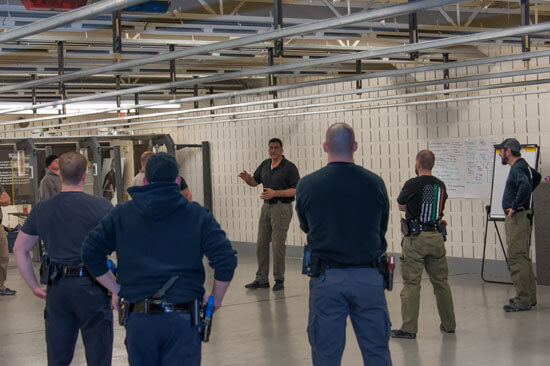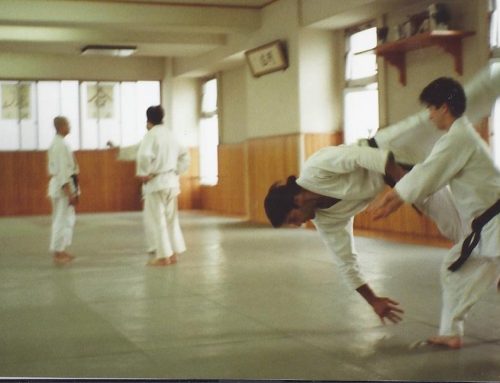As a professional instructor and keynote speaker throughout the public and private sectors, my courses range from awareness-based training (preventative measures) to empty hand defense, to non-ballistic weapons defense (edged, impact, flexible), to defensive firearms.
At the very end of each course delivery, time is allotted for participant’s questions. In a year’s time I deliver training to about 1,500 attendees. Over the past 30 years (yup, do the math), that’s lots of folks asking me the very same question that plagues any defense-minded individual seeking viable solutions to tactical problems. The question is: What’s my best defense?
At the risk of sounding pedantic, personal defense is, well, personal. To provide an appropriate answer to such a broad-spectrum question, one must consider that each of us has certain physical and mental attributes that make us better at one thing or another than the person standing behind us in line at the store. Given this consideration, there are three things you can do to build your very best personal defense against a real-world active threat: be prepared, be aware and be trained.
Be Prepared
Success favors the prepared. Referencing personal defense against an active threat, it’s my conviction that there are only two types of people walking the earth today, the prepared and the unprepared.
What does it mean to be prepared? It means to take responsibility for your own personal security and that of those you protect. During a violent physical threat, you don’t have the time to wait for the cavalry to ride over the hill. You need to handle it, and now. Aka mindset, you must decide that you’re going to take defensive action before an event occurs or you will be left far behind the action-reaction power-curve when it does.
You must accept the fact the bad things can and do happen to good people. It can happen not at some far-off imaginary date, but the split second you step out of your car, walk into a shopping mall or step into a restaurant.
You must have the will to do whatever it takes to get yourself and your protectee off that fateful “X” and to safety. If you do not have the will to take action against another human being, then when the time comes, you most certainly will not take action. If you do not have this will, then you can forget about any personal defense as you will not be able to act.
Lastly, there is a stark difference between preparedness and paranoia. If you’re paranoid your looking around every corner, behind every tree and under every table for some imagined threat – you can’t live like that.
Being prepared is simply adopting the mindset that it’s your responsibility, having the will to take defensive action, and knowing that bad things can happen and that they could happen at any time. If you’re waiting at a red light and the light turns green and you look left and then right before moving is that being paranoid or prepared?
Be Aware
Being aware of your immediate environment solves more potential problems than you can imagine. Situational awareness can defuse a situation before it even starts. Using input from your senses, can make you aware of fire (if you smell something burning), screeching tires, gunshots, etc., which provide you with the earliest defensive warnings. Having your face buried in your phone like a cow eating grass, can attenuate or even eliminate this critical input.
Your ability to read body language and recognize threat indicators are two important skills that are part and parcel of being aware. Much more information on threat recognition and how to raise your awareness, can be found in my latest book Your Most Powerful Weapon: Using Your Mind to Stay Safe.
Think about how many times you’ve been in a knock-down, drag-out, face-in-the-dirt street fight or have had to use your firearm in a defensive situation. Compare that to how many times you’ve used your situational awareness so that you didn’t need to go to hands, knives or guns. Odds are you will continue to utilize your awareness far more often than your hand-to-hand or defensive firearms skills.
Be Trained
According to the seventh century BC Greek author Archilochus “We do not rise to the level of our expectations, we fall to the level of our training.” Looking at it from a personal defense perspective, you have only two choices: remain untrained or get yourself some training. Which of these two choices will better prepare you to defend yourself and or your protectees in the event of a violent physical altercation?
The question that usually follows is: get trained in what? There’s an endless list of hand-to-hand (Muay Thai, Brazilian Jiu-Jitsu, Karate, Aikido, Tae Kwon Do, Western Boxing, Krav Maga, etc.,), non-ballistic weapons (Filipino martial arts) and ballistic weapons – firearms (handgun, shotgun, carbine, etc.) it truly doesn’t matter which one(s) you choose. My recommendation is to match your natural attributes with the art designed to best fit your personal profile and available time. Either way it’s time and money well spent. Far better to have and not need, then to need and not have.
Being prepared gives you the right mindset. It makes you accountable, which provides you the motivation, or will, to take action against another human being if need be. Using your awareness affords you the opportunity to see it, hear it or smell it coming – a tremendous tactical advantage, so be aware. Get trained – any type of physical skills is better to have in your tool kit than standing there holding your fruit basket when it hits the fan.
Be prepared, be aware and be trained. You can choose one, or all of these (your best defense) or none of the above. The choice is yours.


